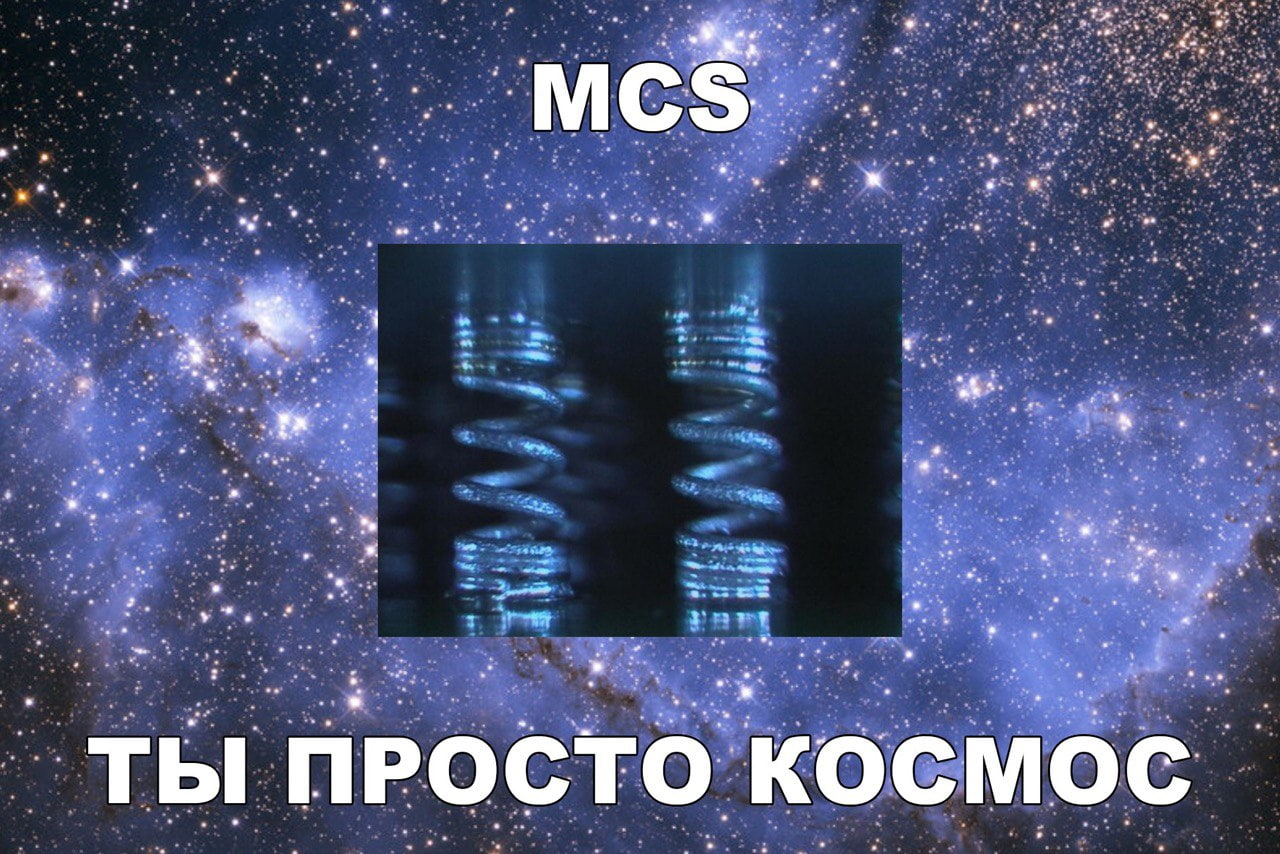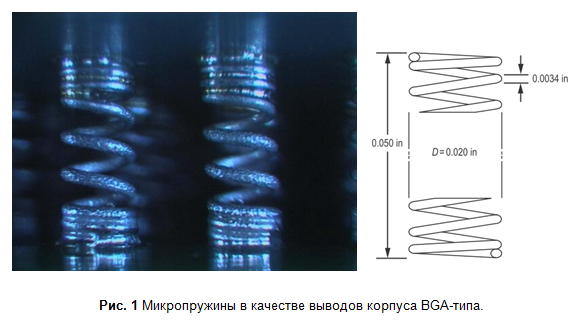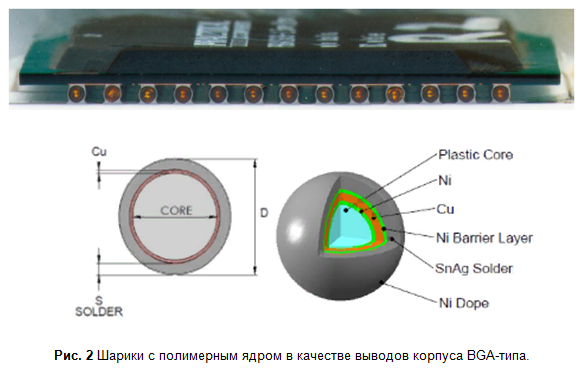In the comments to the
previous publication,
hhba shared an article which in itself is worthy of a separate publication, so beautiful solutions are presented there. In addition to her review, I will try to put an end to the “i” over the question of the use of plastic cases in space applications. This issue was partially addressed in the first part and in the comments to it, but now it will be examined in more detail.

So, first of all, about ceramic cases, which at the moment of development of packaging technology in terms of a combination of parameters are superior in reliability to plastic cases (about the reasons later). As was shown in the previous article, the main problem with them (especially for large buildings) is the mismatch of the coefficient of thermal expansion (CTE) of ceramics and fiberglass. The first solution to the problem is the rejection of traditional printed circuit boards and the transition to ceramic manufactured using LTCC technology. The second - various ways to reduce the load on the housing leads arising from thermal cycling (table 1, using BGA-type housings as an example).
It turns out that in addition to the methods presented in the table, there are two more that are given here in
this article. And they are good at showing how beautiful engineering solutions can be. The first method, which the article is devoted to, is to use micro-springs (English microcoil spring interconnect, MCS) (Fig. 1), and the second, which is given to compare the effectiveness, is to use balls with a polymer core (English plastic core solder ball, PCSB) (Fig. 2).


According to these technologies, there is not much information, but from the data that I could find, it turns out that PCSB is better than ordinary balls, but worse than bar conclusions. But MCS, according to the same article, is superior in reliability (the number of cycles until the first failure, this parameter is important for space) bar conclusions. The main issues that immediately arise for MCS technology are resistance to mechanical stress and parasitic inductance of conclusions. The authors of the article conducted these calculations and experiments, and in comparison with the main competitor - the CCGA-type case: the inductance is lower (4.84 nH versus 5.91 nH), and the resistance to vibration is higher (no malfunctions against 30% failures, Fig. 3 ) At the same time, the technology implies flexibility and the possibility of optimizing the design of micro-springs to obtain the required parameters (inductance, stiffness, etc.).

In my opinion, MCS can be called the most promising technology for ceramic BGA-type cases, requiring additional research. The technology, of course, implies the need for a difficult development of mounting on a printed circuit board, but this, in turn, is true for CCGA-cases. As for PCSB, I think that at least it’s worth knowing about this technology, it has its own niche applications. For example, NSC has a
patent for a CSP-type Micro SMDxt case in which they write that thanks to PCSB they were able to get larger chips.
Now the promised points over the "i" about plastic cases and space. First of all, the functioning of the microcircuit with the preservation of the limits of electrical parameters should be guaranteed under the influence of all external factors. In this case, not factors in general, but factors specific to a particular unit of equipment in a specific mission. Chips that qualify for space are most often tested according to standard requirements (the same famous “not less than 100 krad”, etc.), which may be redundant for the target mission. But the very necessary guarantee.
Are there microchips in a plastic case that are qualified for space "out of the box"? There are, but so far there are few of them. Were microchips in a plastic case used in successful space programs? Yes. But they were used not "out of the box", but after a serious selection according to test results (English upscreening, uprating, etc.). Tests include destructive visual inspection, electrothermal testing, thermal cycling, radiation tests, mechanical, acoustic scanning microscopy, and after each stage electrical parameters are monitored over the entire temperature range. Those who dealt with qualification tests according to domestic GOSTs have an idea of how long and costly the procedures are. Therefore, saving on “plastic” will not work: in one of the articles it was said that the price gain was only ~ 10% (with comparable reliability requirements). This is in case of successful tests, and if not a single chip passes the selection (Fig. 4)?

In addition to the purely probabilistic resistance to radiation effects, plastic microcircuits have their own structural problems, and above all this:
- The delamination of the plastic from the crystal (Fig. 5), which leads to damage to the top layer of the topology and microwire leads during thermal cycling due to their free relative motion. There are excellent experimental works on this [2, 3].
- Hygroscopicity of plastic, which leads to the likelihood of cracking of the body during expansion of water accumulated in microcavities.
If the influence of the second factor can be limited by proper storage, thermal vacuum drying and a protective coating, the first factor is the main reason for rejection [1]. The same problem, by the way, reduces the reliability of the “underfill” technology.
Already drew attention in a previous article that leading manufacturers of chips for space, such as
Aeroflex and
MSK , use only ceramic and metal-glass cases. Perhaps they are conservative and simply follow proven decisions, plus they do not need to reduce costs, so they do not conduct serious research in the field of reliable plastic. But despite all the difficulties, microchips in plastic fly into space, and successfully. The main reasons for their use in
serious projects:
- Lack of required functionality in reliable performance.
Sanctions. - The need to reduce the mass of the spacecraft (a task relevant, for example, for modern small-sized spacecraft).
- Reduced requirements for external factors and / or device lifetime.
Once again, chips, regardless of the reason for their use, should be tested, and the test results apply only to this batch. The selection process itself is not standardized - it is a compromise with the probability of failure and optimization of time and money. Some examples of tests, including depending on the parameters of NASA missions, are given in the articles of Western colleagues [1, 4, 5]. On this, I consider the issue of "plastic" in the
ocean of space to be
open and closed.
Literature
[1] Michael A. Sandor, “Plastic Encapsulated Microcircuits (PEMs) Reliability / Usage Guidelines For Space Applications”, 2000.
[2] Karel van Doorselaer, Kees de Zeeuw, “Relation Between Delamination and Temperature Cycling Induced Failures in Plastic Packaged Devices”, 1990
[3] TM Moore, R. McKenna, SJ Kelsall, “Correlation Of Surface Mount Plastic Package Reliability Testing To Nondestructive Inspection By Scanning Acoustic Microscopy”, 1991
[4] R. David Gerke, Michael A. Sandor, Andrew A. Shapiro, etc. “Use of Plastic Commercial Off-The-Shelf (COTS) Microcircuits for Space Applications”, 2003
[4] R. David Gerke, Michael A. Sandor, Shri Agawal, etc. “Different Approaches for Ensuring Performancel Reliability of Plastic Encapsulated Microcircuits (PEMs) in Space Applications”, 1999